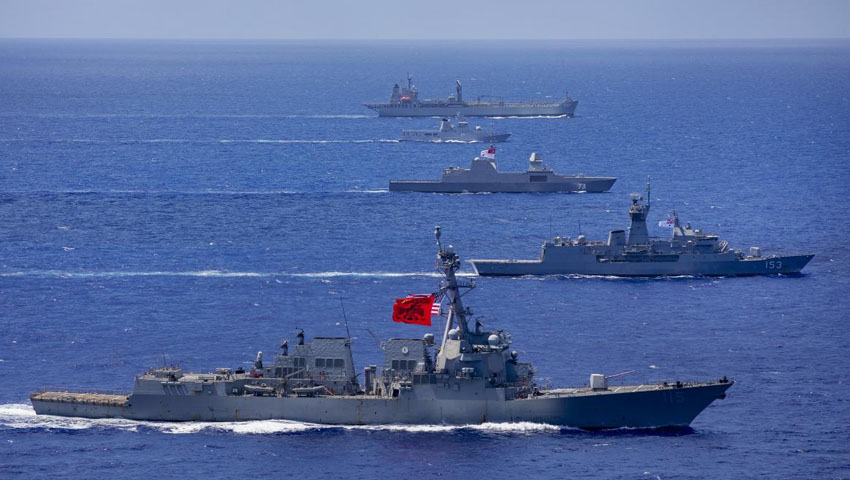US Assistant Secretary of Defense for Indo-Pacific Affairs David Helvey has used his recent official visits to the Indo-Pacific to enhance existing relationships with key allies to support the development of a ‘networked’ region, with a focus on like-minded countries working together.
To continue reading the rest of this article, please log in.
Create free account to get unlimited news articles and more!
As part of his official travels to the Indo-Pacific region this week and previously are to encourage the concept of a 'networked region' supported by like-minded nations working together to maintain the post-Second World War economic, political and strategic order.
Helvey explained the logic behind the 'networked region' concept, saying, "This is about countries that have common interests and shared interests that are willing to commit resources to work to support the folks to left and right in pursuit of a common task."
The Cold War-era North Atlantic Treaty Organization (NATO) binds together 30 nations in collective defence, but there is no comparable treaty organisation in the Indo-Pacific. In the region, the US has a series of bilateral, treaty-based alliance relationships and a set of partnerships.
Assistant Secretary Helvey said, "When we talk about promoting a networked region, we're talking about building the relationships we have not only with our allies and partners, we're promoting the contacts, co-ordination, integration [among] our allies and partners themselves.
"Sometimes that involves us, sometimes them, working together in support of shared interests."
The bottom line is a set of like-minded allies and partners who share values to support the principles of a free and open Indo-Pacific. There are examples of this process. The nations of the region co-operate in enforcement of United Nations Security Council resolutions on North Korea.
The US, Japan, South Korea, the UK, France, Canada and Australia work together to pool resources and share information. This supports implementation of sanctions against North Korea.
Exercises also help build the network, such as the Rim of the Pacific exercise that's going on now. There are other exercises that just include the US, Japan and Australia and one with only the US, Japan and India.
Assistant Secretary Helvey added, "We also have continued defence co-operation [with] the United States, Japan and South Korea. So, to the extent that we're able to not only have bilateral, also multilateral security co-operation is part and parcel of networked security measures."
Expanding on the initiatives established by US Defense Secretary Dr Mark Esper, Assistant Secretary Helvey said, "Esper is looking at the force lay-down worldwide and the Indo-Pacific is, obviously, a large part of that effort. The secretary wants to make sure the United States has the right forces in the right places."
The idea is to ensure the US is resilient in the face of many different types of threats, including China, he explained. China is the concern of many nations in the Indo-Pacific and beyond.
Expanding on this, Assistant Secretary Helvery added, "One of the key things in our strategy is talking about putting the relationship with China on a trajectory of transparency and non-aggression. That's going to require a sustained, open channels of communication with the Chinese — the secretary [Esper] has talked to his Chinese counterpart a number of times already."

 Login
Login







